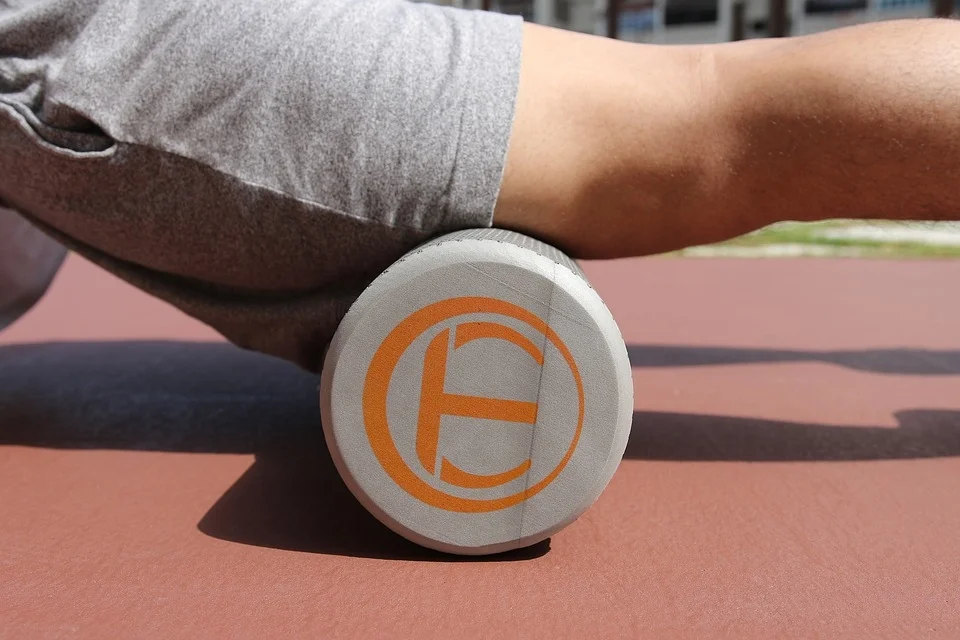Using a foam roller has become a very popular form of self-myofascial release or self-induced massage. Most physical therapy clinics, gyms and sports clubs now have foam rollers on offer. So, what is the foam roller specifically used for, and what benefits do using one provide?
Foam rolling and recovery
Most of us have experienced delayed onset muscle soreness (DOMS) at some stage after vigorous exercise. DOMS can start soon after exercise and last 2-3 days post. A 2015 study published in the Journal of Athletic Training found Foam rolling effectively reduced DOMS and associated decrements in most dynamic performance measures, including pressure-pain threshold, sprint time, change-of-direction speed, power, and dynamic strength-endurance. The study found:
To combat the adverse effects of DOMS, a 20-minute bout of foam rolling on a high-density roller immediately postexercise and every 24 hours thereafter may reduce the likelihood of muscle tenderness and decrements in multijointed dynamic movements. Just three 20-minute bouts (60 minutes total) of foam rolling can substantially enhance recovery after DOMS and alleviate muscle tenderness.(3)
Foam rolling and increasing range of Movement
Research demonstrating the effects of foam rolling on flexibility have been mixed. One study found that foam rolling combined with static stretching can help increase both hip flexion and hamstring length more than static stretching alone. (1) However, another study concluded that foam rolling doesn’t provide any additional benefit to stretching for the anterior thigh and rectus femoris. (2)
Even though there is limited research in this area it does not mean it does not help increase your flexibility. I always encourage people to try and use the roller for a few weeks and see how they feel. If you move better, have managed to decrease your pain and recover quicker than it's working for you.
How does it work?
Specifically how foam rolling aids in recovery, decreasing soreness and increasing ROM are still unclear and need more research. Graduate kinesiology student, Emma Lee, who is currently undertaking a study at the University of Minnesota on whether foam rolling can boost recovery after a session of downhill running suggests, "manipulating connective tissue may be the key to foam rolling’s success".
"Eccentric exercise damages connective tissue, which stimulates pain receptors and inhibits muscle activation,” she explains. Using a foam roller might help repair damage to your connective tissue, thereby decreasing soreness and preventing a drop in performance after a hard workout—a hypothesis also forwarded by MacDonald et al. (4)
Which muscles can I use the foam roller on?
Common areas to use the foam roller on include Quadriceps and TFL, Calves (Gastrocnemius and Soleus), Hamstrings, Adductors, Glutels (Glutes), Lats and Thoracic spine.
Which type of foam roller is best?
As with most things, you get what you pay for. A better-quality roller will retain its shape longer, which is important. Although you can purchase a cheap foam roller in one of many department stores, it may not hold up if you use it regularly.
In terms of the density, the research to date does favour using a dense foam roller which can be made by wrapping a thin layer of foam over a solid PVC pipe. It seems to be more effective at manipulating connective tissue than a softer all-foam roller but again, this will be determined by each individual and when you are new to foam rolling a dense roller may be too hard. A good-quality foam roller would be sufficient for this case.
In summary, foam rolling is a great tool to aid in recovery after exercise to reduce muscle soreness and if used regularly, may increase your range of movement.
References
1. Mohr AR, Long BC, Goad CL.Effect of foam rolling and static stretching on passive hip-flexion range of motion. J Sport Rehabil. 2014 Nov;23(4):296-9. doi: 10.1123/jsr.2013-0025. Epub 2014 Jan 21.
2. Vigotsky AD, Lehman GJ, Contreras B, Beardsley C, Chung B, Feser EH.. Acute effects of anterior thigh foam rolling on hip angle, knee angle, and rectus femoris length in the modified Thomas test. PeerJ. 2015 Sep 24;3:e1281. doi: 10.7717/peerj.1281. eCollection 2015.
3. Foam Rolling for Delayed-Onset Muscle Soreness and Recovery of Dynamic Performance MeasuresGregory E. P. Pearcey, MSc,* David J. Bradbury-Squires, MSc,* Jon-Erik Kawamoto, MSc,* Eric J. Drinkwater, PhD,*† David G. Behm, PhD,* and Duane C. Button, PhD* J Athl Train. 2015 Jan; 50(1): 5–13. doi: 10.4085/1062-6050-50.1.01
4. MacDonald, G. Z., Penney, M. D., Mullaley, M. E., Cuconato, A. L., Drake, C. D., Behm, D. G., & Button, D. C. (2013). An acute bout of self-myofascial release increases range of motion without a subsequent decrease in muscle activation or force. The Journal of Strength & Conditioning Research, 27(3), 812-821.[PubMed]

